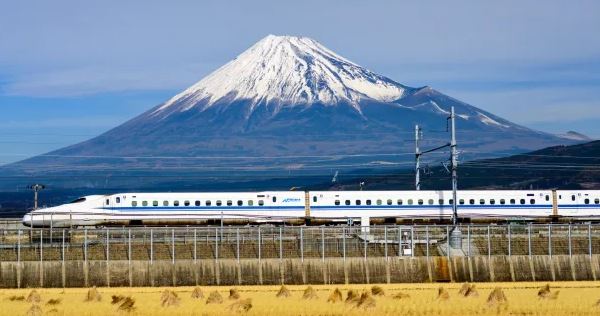On October 1, 2024, Japan celebrates the 60th anniversary of its iconic bullet train, or “Shinkansen,” a symbol of technological innovation and a key player in revolutionizing high-speed rail travel. First launched in 1964, the Shinkansen not only transformed domestic transportation in Japan but also set the stage for high-speed rail networks worldwide. This milestone offers a chance to reflect on the achievements of this engineering marvel and its profound impact on the global transportation landscape.
The Birth of the Bullet Train:
The Shinkansen debuted just in time for the 1964 Tokyo Olympics, marking Japan’s recovery and re-emergence as a technological powerhouse post-World War II. The first train, the 0 Series, traveled the 515 kilometers (320 miles) between Tokyo and Osaka at a groundbreaking speed of 210 kilometers per hour (130 mph), a feat unparalleled at the time.
The project was spearheaded by engineer Hideo Shima and supported by then-Japanese National Railways president Shinji Sogō, both of whom envisioned a faster, safer, and more efficient mode of transportation for Japan’s growing population.
Achievements and Impact:
Since its inaugural journey, the bullet train has achieved numerous milestones:
- Speed Records: Over the decades, the Shinkansen has continued to push the boundaries of speed. The fastest train in the network today, the N700S, operates at speeds of up to 300 km/h (186 mph), with some test trains reaching even higher velocities.
- Safety: In its 60 years of operation, the Shinkansen has maintained an impeccable safety record, with zero passenger fatalities due to accidents, despite carrying over 10 billion passengers.
Punctuality: Renowned for its precision, the bullet train is famously punctual, with average delays measured in mere seconds annually.
- Economic Impact: The Shinkansen has been instrumental in spurring economic development across Japan. It has dramatically reduced travel time between major cities, facilitating business and tourism. Towns and regions along the route have thrived due to improved connectivity.
- Environmental Considerations: With growing concerns over climate change, the energy-efficient design of the Shinkansen, running on electricity and utilizing aerodynamic technology, has also become an environmental model in rail travel.
Global Influence:
Japan’s success with the bullet train sparked global interest in high-speed rail. Countries such as France (TGV), China (CRH), and Germany (ICE) have since developed their own high-speed rail networks, often drawing inspiration from Japan’s pioneering system. China’s high-speed rail network, which now exceeds 40,000 kilometers, is the largest in the world, but the Shinkansen remains a benchmark for innovation and reliability.
Conclusion:
As the Shinkansen celebrates its 60th anniversary, it remains a symbol of technological advancement and a testament to Japan’s commitment to innovation in public transport. The bullet train’s legacy is more than just speed—it represents safety, efficiency, and an ongoing pursuit of excellence. As the world continues to face challenges in transportation and environmental sustainability, the Shinkansen stands as a shining example of how technology can drive progress and connect people across vast distances. With future developments in maglev trains and other advancements on the horizon, the Shinkansen is poised to continue leading the charge in the next era of high-speed travel.



